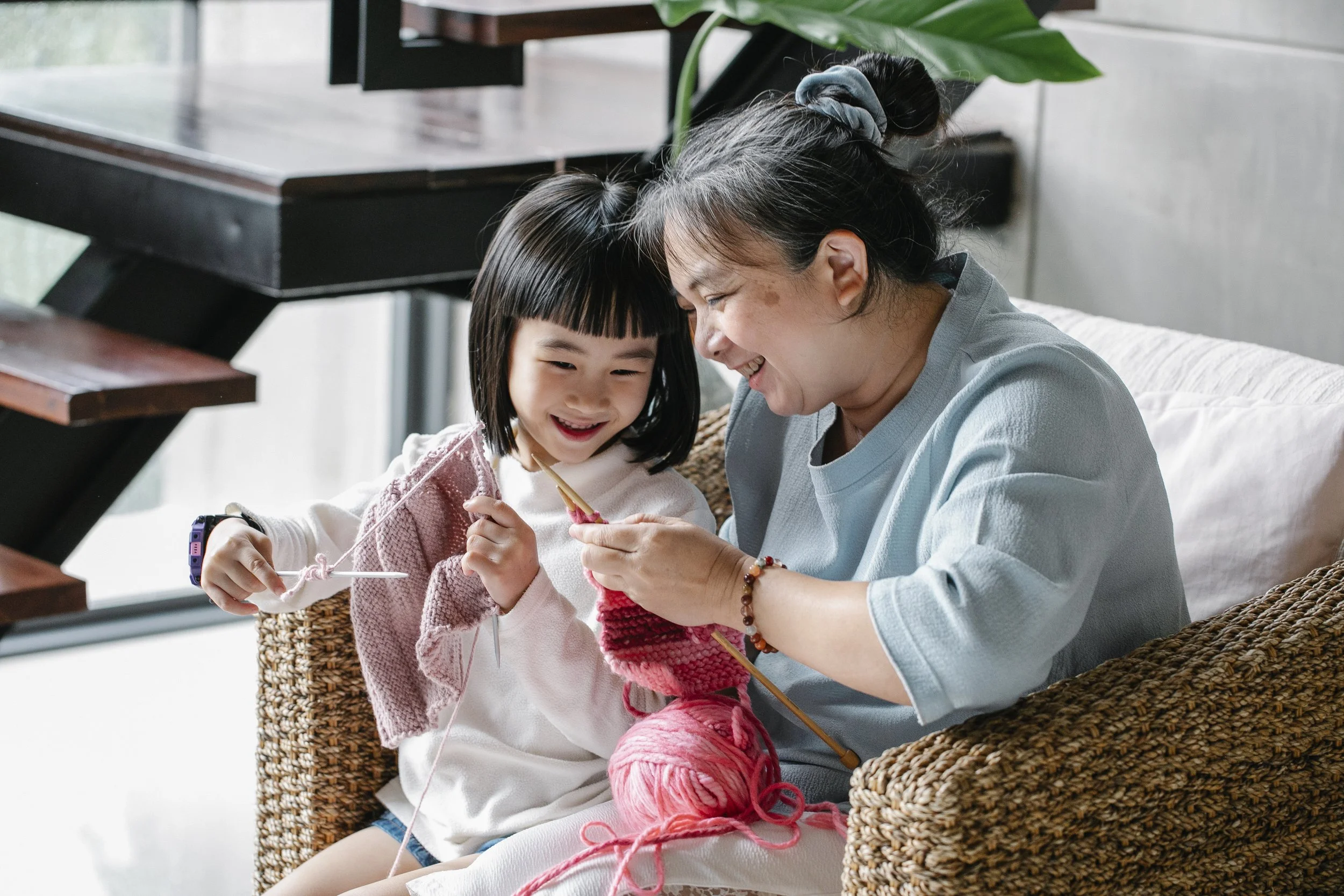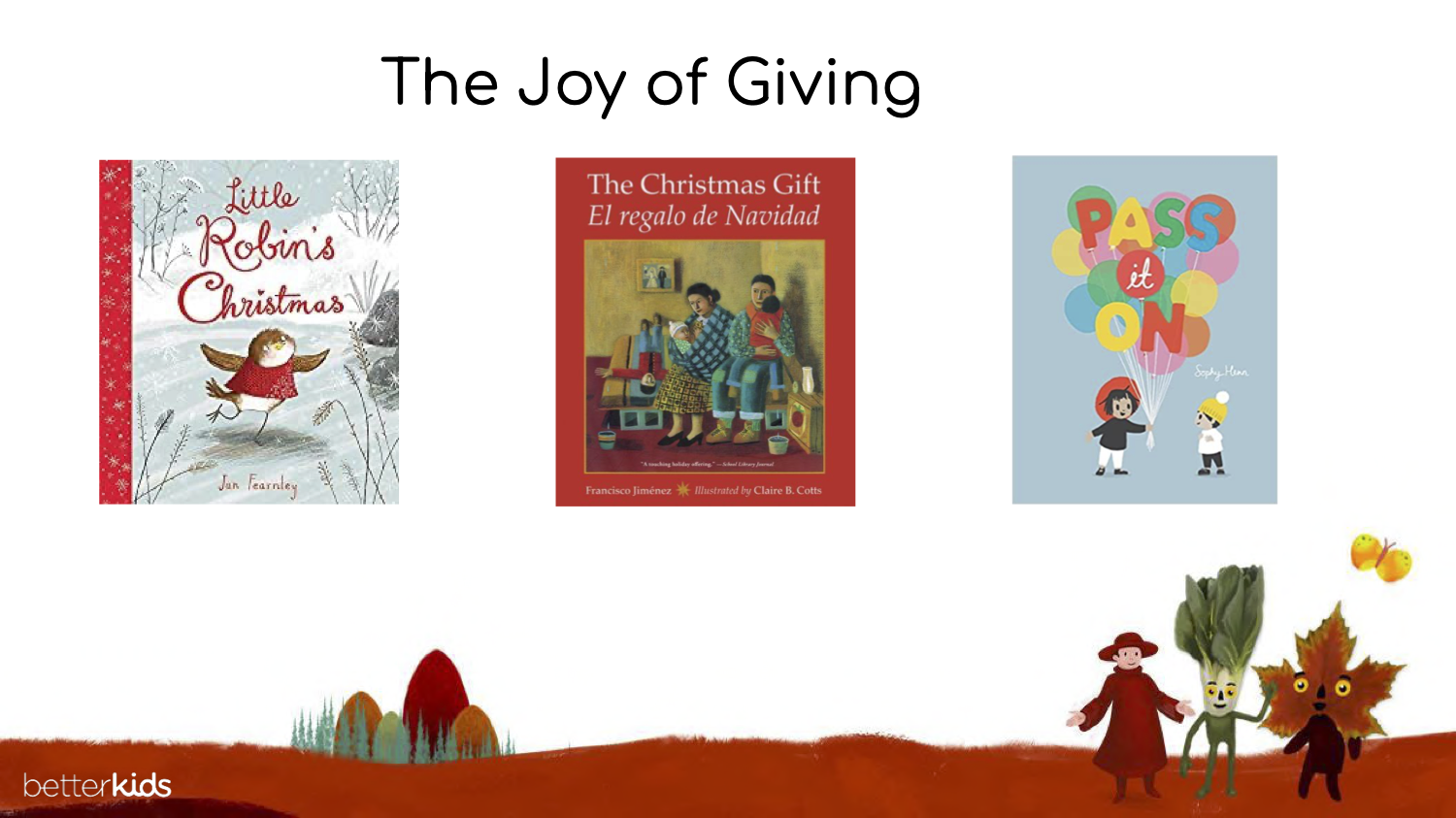During this time of year, the lights seem brighter (and especially colorful during Christmastime), the air is colder in the morning, and everyone is smiling as if holding a secret because they are certain they got just the right gift for their loved ones. Our children especially may be bouncing with excitement and no matter what holiday you are celebrating, our kids are thrilled to be a part of it all. The generosity we experience and give this time of year is shown mostly through the tangible, which gives us an opportunity to help our children learn how to be generous through the intangible: acts of love and service.
Generosity, or sharing, isn’t always easy for kids. According to research, this is a result of the impulse control part of the brain being underdeveloped, so “children who fully understand the concept of fairness fail to act accordingly.” Generosity is an important social skill because it helps us to be more empathetic, build positive relationships, make responsible decisions, and be involved in our communities. The activities below will help your child understand the importance of generosity and how they can continue to be generous throughout the year.
1. The Joy of Giving
What is generosity? Through books and reflection you can help your child understand what generosity looks like. The holiday season is an especially perfect time to reflect on how the spirit of joy is discovered when we give to others. We learn we don’t need many possessions, and that true joy is found in the company of others and the best gifts of all are the ones that come from the heart. Check out these book suggestions and questions for reflection on the joy of giving!
After reading a book, you can discuss these questions with your child:
What does “the joy of giving” mean to you?
How does the main character in the story learn about the joy of giving?
How does the main character feel when they receive kindness?
What are some things we can give to others instead of material things?
After reading the story, what do you think is the greatest gift of all?
How could you spread joy at home?
How could you spread joy at school?
2. Share your Talents
I have a friend who is incredibly talented at playing the piano. The first time I heard him play and sing I was startled because it was so beautiful. I have many musically talented friends and almost every time we are together they share their talents through music and song. I couldn’t ask for a better gift than my friends sharing the talents which I’m sure took a long time to practice and develop. Their act of generosity through playing music made me feel happy and loved.
Perhaps your child has a hobby or talent they really love. It could be anything from building puzzles, dancing, or reading. Next time your child engages in one of these activities, ask if you can sit with them or if they would like to tell you about it afterward. Follow-up this interaction with telling your child how it made you feel that they shared their talent with you. Through this conversation we can begin to help our children understand that their loved ones delight in their talents. Your child is happy doing those activities, which makes you happy and others too! After discussing how your child could share their talents and hobbies with others, encourage them to reflect on their friends' favorite activities and how your child feels when someone shares their favorite activity with them.
3. Generous with Time
When I was an assistant teacher and would work on preparing materials while my preschoolers had free time, it would bring me so much joy when one of my students came to sit quietly with me. They would either continue with their independent play, quietly molding Play-Doh into Christmas cookies to share with me while I cut shapes for our next craft or they’d ask me to play with them. We had a busy classroom with many materials and other kids to interact with but I remember feeling thankful when a child took the time to share their activity with me.
Encouraging your child to share their time with others will help give them a break from technology, remind them to be in the present moment, and develop a greater appreciation for the person they are with. While your child may have a routine and scheduled time with friends and family already, you can foster an understanding of what it means to be generous with time through conversation. The examples below show how to acknowledge when someone, including your child, has been generous with their time:
I am thankful my friend Mary took the time to help me bake cookies for the bake sale today.
Your grandma was really thankful the Christmas carolers spent extra time to sing her favorite song.
Thank you for putting your iPad away and playing a game with your sisters instead.
It was really generous of your friend to use her recess to help you with your homework. Let’s write her a thank-you note.
4. Generous with Kindness
A few weeks ago I led a retreat where we did an affirmation notes activity. It was a powerful activity that filled everyone with love and joy just from writing the notes! Imagine the overflowing of emotion we felt after reading the affirmations! This is a great activity for kids of all ages. Affirmation notes could be for a family member, friend, or community member. Encourage your child to share with this person how they inspire them, what they enjoy most about that person, or why they are grateful for them. Check out templates for writing these notes or letters in our holiday workbook, My Holidays with Wisdom.
We experience joy when others are generous with us and when we are generous with others! Helping your child learn generosity will also help them to be more empathetic and build strong, positive relationships. We hope you are especially generous with sharing your smile this holiday season!





